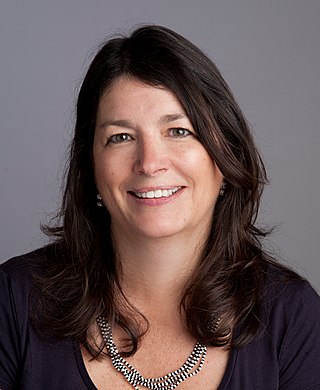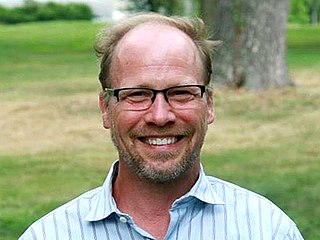
A volcanologist, or volcano scientist, is a geologist who focuses on understanding the formation and eruptive activity of volcanoes. Volcanologists frequently visit volcanoes, sometimes active ones, to observe and monitor volcanic eruptions, collect eruptive products including tephra, rock and lava samples. One major focus of inquiry in recent times is the prediction of eruptions to alleviate the impact on surrounding populations and monitor natural hazards associated with volcanic activity. Geologists who research volcanic materials that make up the solid Earth are referred to as igneous petrologists.

Petrology is the branch of geology that studies rocks and the conditions under which they form. Petrology has three subdivisions: igneous, metamorphic, and sedimentary petrology. Igneous and metamorphic petrology are commonly taught together because they both contain heavy use of chemistry, chemical methods, and phase diagrams. Sedimentary petrology is, on the other hand, commonly taught together with stratigraphy because it deals with the processes that form sedimentary rock.
The Lamont–Doherty Earth Observatory (LDEO) is the scientific research center of the Columbia Climate School, and a unit of The Earth Institute at Columbia University. It focuses on climate and earth sciences and is located on a 189-acre campus in Palisades, New York, 18 miles (29 km) north of Manhattan on the Hudson River.

The Index to Marine & Lacustrine Geological Samples is a collaboration between multiple institutions and agencies that operate geological sample repositories. The purpose of the database is to help researchers locate sea floor and lakebed cores, grabs, dredges, and drill samples in their collections.
The Earth Institute is a research institute at Columbia University that was established in 1995. Its stated mission is to address complex issues facing the planet and its inhabitants, with a focus on sustainable development. With an interdisciplinary approach, this includes research in climate change, geology, global health, economics, management, agriculture, ecosystems, urbanization, energy, hazards, and water. The Earth Institute's activities are guided by the idea that science and technological tools that already exist could be applied to greatly improve conditions for the world's poor, while preserving the natural systems that support life on Earth.

R/V Marcus Langseth is a research vessel owned and operated by the Lamont–Doherty Earth Observatory (LDEO) of Columbia University as a part of the University-National Oceanographic Laboratory System (UNOLS) fleet. The Marcus G. Langseth was dedicated on December 4, 2007, came into service in early 2008, replacing the R/V Maurice Ewing. Langseth is intended primarily to collect multichannel seismic data, including 3-D surveys. The ship was purchased from the geophysical survey company WesternGeco in 2004, having previously been named Western Legend.

The riserless research vessel JOIDES Resolution, often referred to as the JR, is one of the scientific drilling ships used by the International Ocean Discovery Program (IODP), an international, multi-drilling platform research program. JOIDES Resolution was previously the main research ship used during the Ocean Drilling Program (ODP) and was used along with the Japanese drilling vessel Chikyu and other mission-specific drilling platforms throughout the Integrated Ocean Drilling Program. She is the successor of Glomar Challenger.
The Petrological Database of the Ocean Floor (PetDB) is a relational database for global geochemical data on igneous and metamorphic rocks generated at mid-ocean ridges including back-arc basins, young seamounts, and old oceanic crust, as well as ophiolites and terrestrial xenoliths from the mantle and lower crust and diamond geochemistry. These data are obtained by analyses of whole rock powders, volcanic glasses, and minerals by a wide range of techniques including mass spectrometry, atomic emission spectrometry, x-ray fluorescence spectrometry, and wet chemical analyses. Data are compiled from the scientific literature by PetDB data managers, and entered after methodical metadata review. Members of the scientific community can also suggest entry of specific data that has been entered into the EarthChem Library. PetDB is administered by the EarthChem group under the IEDA facility at LDEO headed by K. Lehnert. PetDB is supported by the U.S. National Science Foundation.
The International Generic Sample Number or IGSN is a persistent identifier for sample. As an active persistent identifier it can be resolved through the Handle System. The system is used in production by the System for Earth Sample Registration (SESAR), Geoscience Australia, Commonwealth Scientific and Industrial Research Organisation Mineral Resources, Australian Research Data Commons (ARDC), University of Bremen MARUM, German Research Centre for Geosciences (GFZ), IFREMER Institut Français de Recherche pour l'Exploitation de la Mer, Korea Institute of Geoscience & Mineral Resources (KIGAM), and University of Kiel. Other organisations are preparing the introduction of the IGSN.

Robert D. Conrad (T-AGOR-3) was a Robert D. Conrad-class oceanographic research ship that operated from 1962 to 1989. The ship, while Navy owned, was operated as the R/V Robert D. Conrad by the Lamont–Doherty Earth Observatory of Columbia University from delivery to inactivation. The ship provided valuable ocean-bottom, particularly seismic profile, information and underwater test data to the U.S. Navy and other U.S. agencies.
GEOTRACES is an international research programme that aims to improve an understanding of biogeochemical cycles in the oceans.

Maureen E. "Mo" Raymo is an American paleoclimatologist and marine geologist. She is the Co-Founding Dean of the Columbia Climate School, Director of the Lamont–Doherty Earth Observatory of Columbia University, the G. Unger Vetlesen Professor of Earth & Environmental Sciences, and Director of the Lamont–Doherty Core Repository at the Lamont–Doherty Earth Observatory of Columbia University. She is the first female climate scientist and first female scientist to head the institution.
MetPetDB is a relational database and repository for global geochemical data on and images collected from metamorphic rocks from the earth's crust. MetPetDB is designed and built by a global community of metamorphic petrologists in collaboration with computer scientists at Rensselaer Polytechnic Institute as part of the National Cyberinfrastructure Initiative and supported by the National Science Foundation. MetPetDB is unique in that it incorporates image data collected by a variety of techniques, e.g. photomicrographs, backscattered electron images (SEM), and X-ray maps collected by wavelength dispersive spectroscopy or energy dispersive spectroscopy.
The European Consortium for Ocean Research Drilling (ECORD) is a consortium of 14 European countries and Canada that was formed in 2003 to join the Integrated Ocean Drilling Program (IODP) as a single member. ECORD is now part of the International Ocean Discovery Program, which addresses crucial questions in Earth, Ocean, Environmental and Life sciences based on drill cores, borehole imaging, observatory data, and related geophysical imaging obtained from beneath the ocean floor using specialized ocean-going drilling and research vessels and platforms. As a contributing member of IODP, ECORD is entitled to berths on every IODP expedition.

Terry Ann Plank is an American geochemist, volcanologist and professor of earth science at Columbia College, Columbia University, and the Lamont Doherty Earth Observatory. She is a 2012 MacArthur Fellow and member of the National Academy of Sciences. Her most prominent work involves the crystal chemistry of lava minerals in order to determine magma ages and movement, giving clues to how quickly magma can surface as lava in volcanoes. Most notably, Plank is known for her work establishing a stronger link between the subduction of ocean sediments and volcanism at ocean arcs. Her current work can be seen at her website.
Plank states that her interest in volcanoes began when her Dartmouth professor took her and other students to Arenal volcano in Costa Rica. He had them sit and have lunch while on top of a slow-moving lava flow and while watching bright red goops of lava crack out from their black casings. "It was totally cool, how could you not like that?" Plank recalled the event to State of the Planet, an Earth Institute News source at Columbia University.
The International Association of Geoanalysts is an international not-for-profit learned society. Its objectives are to: "serve as an international forum for the advancement of geoanalytical science and to promote the interests and support the professional needs of those involved in the analysis of geological and environmental materials".
Joanne S. Johnson is a geologist and Antarctic scientist, who has worked for British Antarctic Survey (BAS) since 2002. She works in the palaeoenvironments, ice sheets and climate change team and is best known for her work on glacial retreat. The Johnson Mesa in James Ross Island, Antarctica is named in her honour.

Peter B. de Menocal is an oceanographer and paleoclimatologist. He is the president and director of the Woods Hole Oceanographic Institution, a research facility in Massachusetts.
Rajdeep Dasgupta is a professor of Earth, Environmental, and Planetary Sciences at Rice University. In his research, he studies the role of subsurface melting and magma on the origin and evolution of the Earth and other terrestrial planets.
Tina van de Flierdt is a Professor of Isotope Geochemistry at Imperial College London.








